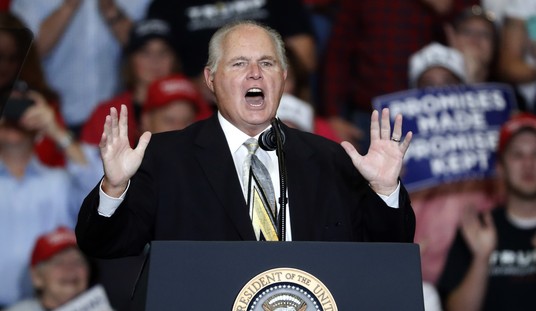The House narrowly passed John Boehner’s debt ceiling, debt reduction package on Friday with no Democratic votes. Senate Majority Leader Harry Reid , due to the 60 votes needed to break a filibuster, is unlikely to get much further than his 53-vote majority for his own version of the legislation, and even if he did, his bill, in its current version, could not pass the House.
The president continues to tell the American people to email, call, and tweet GOP members of Congress on behalf of a “balanced approach” (to include “revenues” ), though even his fellow Democrat, Harry Reid, abandoned such an approach a week ago, instead offering a spending cuts only approach to deficit reduction. Reid, of course, is trying to protect his members from having to cast a vote to raise taxes, given that near half of the 23 Democratic -held Senate seats up in 2012 are potentially at risk.
A few dozen Blue Dog Democrats in the House walked the plank voting for ObamaCare in March 2010 and, after the 2010 midterms, were out of a job. For the uninitiated, “revenues” are the new code word for “higher taxes,” much as “progressive” has replaced “liberal” in the political lexicon. From now on, April 15th is “Revenue Day,” and Democrats only seek more revenue, not higher tax rates.
We have on our hands a colossal mess, in which no one seems to have improved their standing with the public, and it is unclear how this will get worked out in the next few days. The investment markets, after assuming this was politics and posturing, as usual, and that everything would work out in time, are now considering for the first time the real possibility of a deal not getting done by the Treasury Department’s announced deadline of Tuesday, August 2. That date may be a soft deadline, it turns out. The stock market had its worst week in a year in the week ending Friday, and if no resolution appears imminent on Monday, it could be the start of another heavy down week. Harry Reid is hoping Senate Minority Leader Mitch McConnell can save him and the president from appearing to be the obstructionists to getting a deal done, now that the House for the second time in a week has acted and passed a bill that he and the Democrats tabled.
The bond rating agencies, which have warned that raising the debt ceiling may not be enough for the nation to maintain its AAA credit rating, without a significant deficit reduction effort in the coming years, may now conclude that Washington is too dysfunctional to take any crisis seriously. That dysfunction, as Charles Krauthammer suggested on Friday, is inevitable with divided government between two political parties with significantly different visions for the country’s future. President Obama, who has run up annual deficits of $1.5 trillion a year, will have more than doubled the nation’s total external debt by the end of his first term. That number is now $9.7 trillion (out of total national debt of $14.3 trillion, the remainder representing debts the government owes itself) and Obama has added nearly $4 trillion to that total in 2.5 years.
Add another $2.4 trillion for the remainder of his term, and near 55% of total external debt for the country’s 200 plus years will have been accumulated in just four years. But listen to liberal members of Congress or the president, or read liberal writers like Jon Cohn of the New Republic and Paul Krugman of the New York Times, and the real problem is that the debt is not growing rapidly enough — that the stimulus should have been larger and needs a second giant tranche now. And these writers have dreams of future entitlement growth, and “vital” new spending programs (clean energy, education, high speed rail). Just as any cuts to existing programs are draconian, all new spending is vital to “winning the future” and job growth. The possibility that the Keynesian approach of massive deficit spending as the way to work a nation out of a recession has been consistently proven wrong, or has achieved its goal only during World War 2 (when economic growth was an afterthought to spending to win the war), is simply not considered. The nation is now experiencing an extraordinarily weak recovery, perhaps a double dip recession, and government stimulus (the gap between spending and “revenues”) is 45% of total spending, and over 10% of GDP. But this is not enough stimulus for the left. That next injection is the one that will create jobs and growth.
For the GOP, their commitment is to cut not just the rate of growth in government, but to roll back some of the great “achievements of the left,” such as ObamaCare. Some in the GOP and some pundits on the right seem to think that control of the House is enough to dictate the results of divided government, and hence, the House Republicans are wimping out by not pushing for more cuts, sooner. This view is about as realistic as Krugman’s call for more spending to create the jobs the previous spending did not. Exactly how does the GOP force its way to victory when Democrats control the Senate and Obama is the president?
As Krauthammer argues, Obama won in 2008 and set out to remake America. He got pretty far with his work, with ObamaCare the paramount achievement. Of course, ObamaCare is considered a deficit reduction bill for the next ten years by the CBO, so no one need worry about the $200 billion a year in new spending for what will turn out to be largely a middle class entitlement, since it is “paid for.” If enough companies drop health insurance coverage, pushing lots of people into the exchanges — people the CBO assumed would remain insured by their companies — the cost of the bill will skyrocket.
The Class Act, the new long-term care entitlement program in ObamaCare, was scored as a $72 billion deficit reduction program in the first ten years, since premiums were collected for years before any payouts. This Ponzi scheme was so obvious a long term loser for the government that even some Democrats have come around and support killing it. The $14 plus trillion in current debt (internal and external), plus the near ten trillion to come over the next ten years — including the “savings” (deficit reduction) from ObamaCare — are just the start. If interest rates rise, and if economic growth remains well below forecast (near 4%), the total debt numbers will rise more rapidly.
It is in this environment that Harry Reid proposes $2.2 trillion in deficit reduction over ten years with more than half of it artificial, coming not from spending as much as in prior years for wars that are already being wound down. And yet even this extremely modest back loaded effort at debt reduction is drawing fire from the left.
So how will this get resolved by Tuesday, if it does? The president is adamant that there can not be another vote on the debt ceiling before the 2012 election. The fact that votes to raise the debt ceiling have occurred on average every 8 months over the last 50 years is simply inconvenient history for Obama. The Democrats now say they do not want another debt ceiling vote that would spoil Christmas for shoppers in late 2011, perhaps the lamest attempt at argument in a month of weak parries. In reality, the president’s approval numbers have tanked to new lows (-12 in both Gallup and Rasmussen today), with 42% average approval for these two tracking polls.
Obama and his team do not want to give him another chance to fail on the job, and have the debt issue front and center before the election. His mishandling of the debt ceiling/ debt talks has revealed a president who seems severely lacking in leadership and negotiating skills. He has appeared alternately unengaged, or angry, and has not gained the trust of members of either party. Having coasted for so long, he seems unable to deal with a situation where everything is not going his way. The deal that Reid and McConnell offered to Obama last Sunday, which he rejected, may still be the only thing than can pass both houses, though largely with Democratic votes in the House.
In essence, we seem headed for a package that will be advertised as over $2 trillion in deficit reduction over ten years, but will, in fact, be far less. The spending cuts will be backloaded and gimmicky, particularly if it is Reid’s bill that becomes the model. There may be two tranches of debt ceiling increase, but the second piece will be fairly certain to occur, and not involve the haggling that accompanied this negotiation. There will be no new revenues. There will be no grand bargain. And every incumbent, from the president to members of the House and Senate, will have an uphill battle explaining what was accomplished.
As Krauthammer argues, Round 3, the rubber match between the parties, will be in November, 2012. The big issue then will almost certainly be the state of the economy — not the deficit number. The unemployment rate, and underemployment rate, and the rate of GDP growth will matter more, I think, than the deficit number. If all that spending did not produce jobs or economic growth, but only much bigger debts, then the political party which has argued for bigger government will likely lose.









Join the conversation as a VIP Member